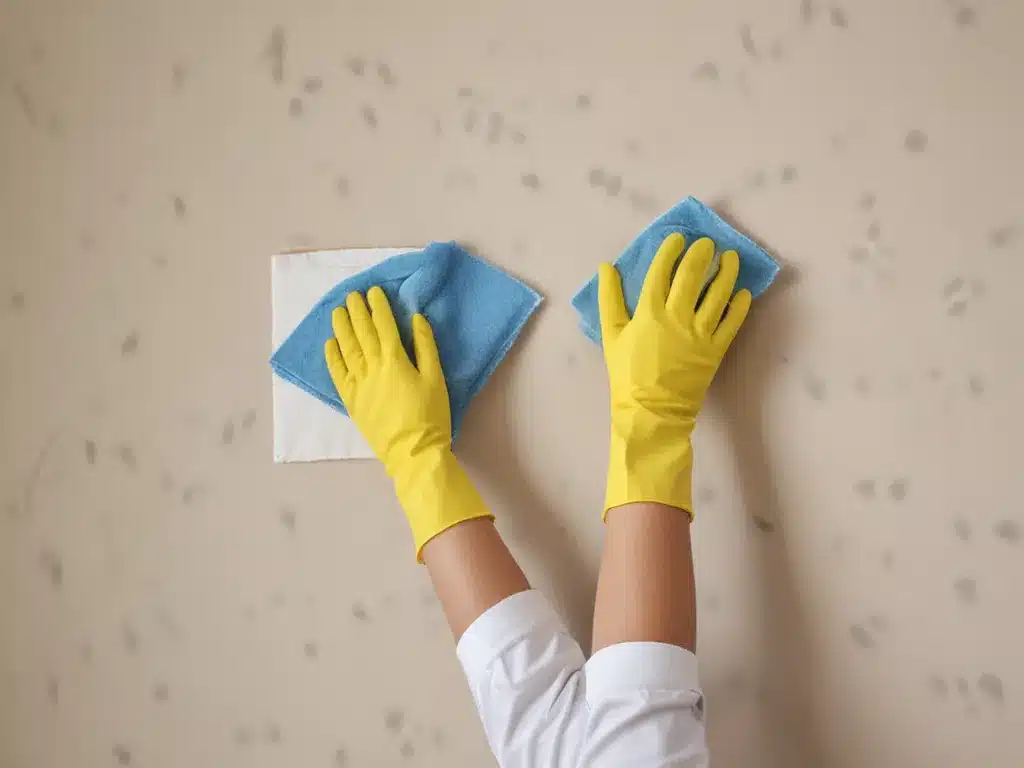Spring is here and it’s time to do some deep cleaning around the house. One area that often gets neglected is walls and wall surfaces. Giving your walls a thorough wipe down can make a huge difference in the look and feel of your home. Here’s everything you need to know to get your walls spring cleaned.
Assess the Current Condition of Your Walls
Before deciding on a cleaning method, take some time to assess the current condition of your walls. Here are some key things to look for:
-
Dirt and dust buildup – Do your walls have a dull, dirty look? Dust and dirt accumulate on walls over time. Spring cleaning is a great chance to remove this grime.
-
Grease and food splatters – Kitchen walls in particular can get greasy from cooking. Check for splattered food and oils.
-
Scuffs and marks – Everyday wear and tear can leave scuff marks on walls near doors, baseboards, and commonly used furniture.
-
Chipped paint – Examine walls for any chipped or cracked paint. This may need patching after cleaning.
-
Wallpaper peel – Over time, edges of wallpaper can start to peel or bubble. Make note of any problem areas.
Choose Your Cleaning Method and Supplies
Once you’ve assessed the condition of your walls, it’s time to choose your cleaning method. Here are some options:
Water and Mild Soap
-
For lightly soiled walls, a mixture of warm water and mild dish or laundry soap can be effective. Use a sponge or soft cloth.
-
Rinse with clean water and dry with a clean towel.
Vinegar Solution
-
For tougher dirt or grease, mix 1/2 cup white vinegar per 1 gallon of warm water.
-
Wipe walls with a sponge soaked in the solution. Rinse and wipe dry.
TSP Cleaner
-
Trisodium phosphate (TSP) is a powerful cleaner available at hardware stores.
-
Follow package directions to mix a TSP solution and wipe walls. Rinse thoroughly.
Steam Cleaner
-
A handheld steam cleaner uses hot steam to sanitize and cut through grease.
-
Steer the steam head over the wall surface and wipe with a clean cloth.
Section by Section Wall Cleaning
Now it’s time to get cleaning! Tackle walls one section at a time for the best results:
1. Dust Walls
- Use a microfiber duster or vacuum hose attachment to remove loose dust and debris from the walls. This prevents spreading dirt around while cleaning.
2. Spot clean problem areas
- Focus on greasy kitchen areas, scuffs, dirt buildup, etc. Use targeted spot cleaning methods.
3. Wash from top to bottom
- Once spot cleaning is done, clean walls section by section from top to bottom. This stops drips from causing more mess.
4. Rinse and dry
- Wipe all cleaned walls with clean water to rinse. Dry with a clean towel.
5. Check for patchwork
- Once dry, inspect walls for any areas needing paint touch ups or patching.
Extra Tips for Special Wall Surfaces
Certain types of wall surfaces require some special attention:
-
Wallpaper – Clean gently to avoid tearing the paper. Avoid excess water.
-
Textured walls – Use a soft brush to work cleaning solution into textured surfaces. Rinse thoroughly.
-
Outdoor siding – Use an outdoor siding cleaner and a long handled brush to reach high areas. Avoid harsh chemicals.
Maintain Fresh Walls
Once your walls are freshly cleaned, keep them looking their best by:
- Dusting walls weekly
- Cleaning new marks quickly to avoid stains
- Washing walls seasonally as needed
With some elbow grease and the right methods, you can get your home’s walls looking clean and refreshed this spring. Always test cleaning solutions in an inconspicuous spot first. Happy spring cleaning!







